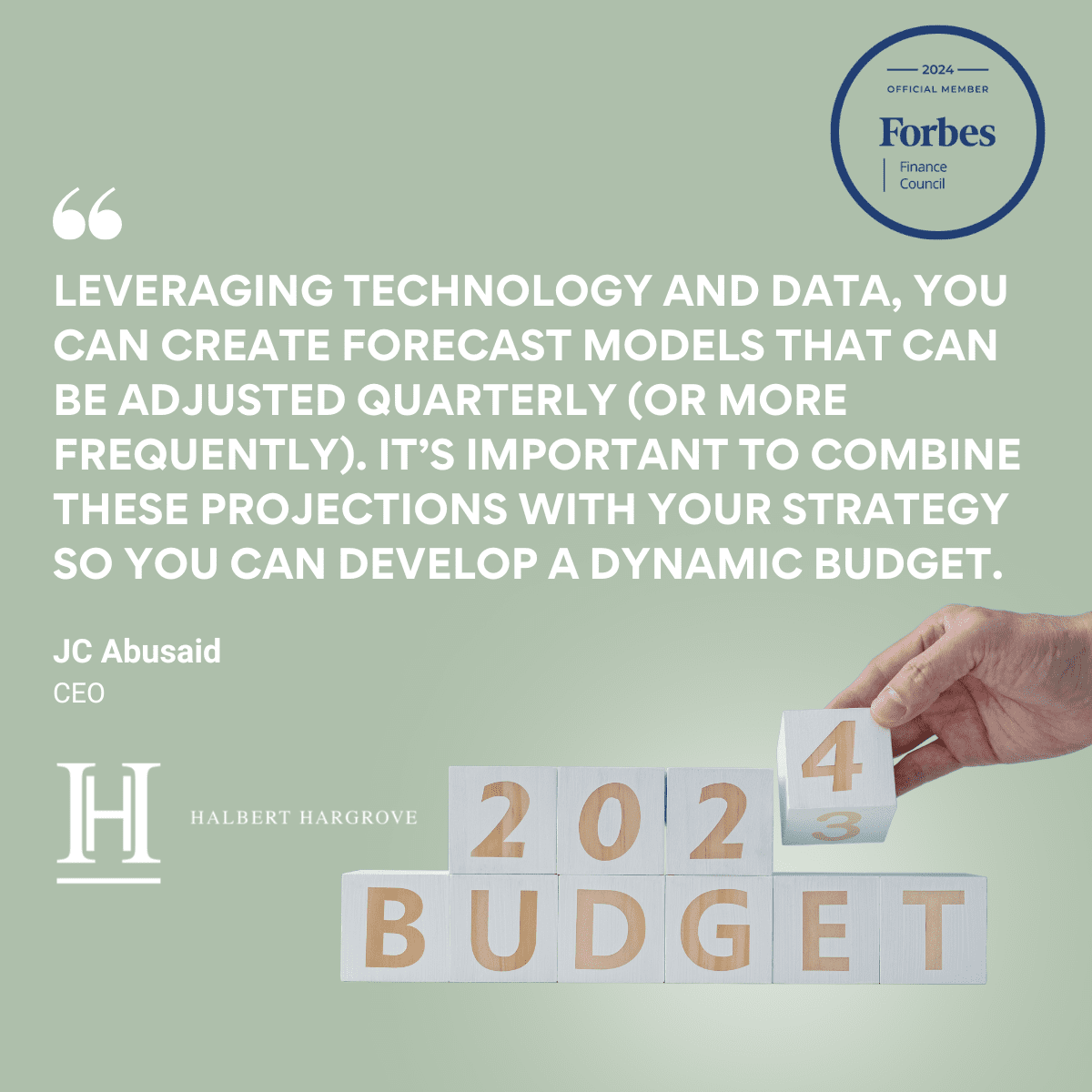By Forbes Finance Council, Forbes featuring By JC Abusaid, CEO/President
An organization’s ability to optimize its financial forecasting and budgeting processes is crucial for success. However, many financial leaders face challenges in developing effective budgetary strategies in the face of a complex global market and uncertain economic trends.
To help, 20 Forbes Finance Council members explore strategies and tools that can significantly improve the accuracy and efficiency of financial forecasting and budgeting. These tactics can empower financial leaders to make more informed and strategic decisions.
1. Get Organized With A Database
Financial forecasting can be improved by consistently maintaining a database of the major revenue and expense metrics that impact the organization’s income statement. This database combined with a constant evaluation of current economic activity will allow the organization to maintain a perpetual five-year forecast enabling management to make informed decisions beneficial to the organization. – Brad Johnson, Cobb County School District
2. Embrace Analytics
Leaders can enhance their forecasting and budgeting by embracing advanced data analytics and technology. Implementing robust modeling can help better predict market trends and adapt to changes swiftly. Collaborating closely with other departments for input and feedback ensures more accurate forecasts and regular reviews and updates to the budget enable better accuracy in a dynamic business environment. – Ali Firoozi, The PAC Group
3. Start With A Zero-Based Budgeting System
In terms of budgeting, zero-based budgets should be the starting point instead of looking at the prior year. Remember, finance owns the process, but business leaders are responsible for their budgets. Shift from trying to “meet” a target, as this fosters negotiation and gamesmanship. Instead, build in productivity targets that incent leaders and teams to beat the prior year and reward them for it! – Paul Blanco, Barnum Financial Group
4. Maintain Consistent Communication
Technology and communication are easily overlooked factors when forecasting and budgeting. With refined high-quality data, and some AI programs, it has become increasingly simple to get high-quality and accurate information. Be sure to keep clear and constant communication with your team, as they have valuable input and should always be aware of the company’s short and long-term objectives. – Frankie DiAntonio, Lexington Capital Holdings
5. Focus On Cross-Departmental Collaboration
Financial leaders have a lot of tools at their disposal. Enhance forecasting and budgeting by integrating advanced analytics and AI for more accurate predictions, fostering cross-departmental collaboration for holistic insights and regularly reviewing and adjusting budgets to reflect real-time data and market changes. This approach ensures adaptability and precision in financial planning. – Greg Cucino, Roundtable Strategy Advisors
6. Sharpen Financial Planning Skills
Honing financial planning and analysis skills is done via scenario analysis, frequent evaluation of the economic market and using modern technology and AI for an enhanced, detailed look into the organization’s financial prospects. This way, leaders can provide more informed recommendations for improvement, generate critical business insight and make empowered decisions. – Razzak Jallow, FloQast
7. Adopt Continuous Forecasting Methods
Financial leaders should use advanced analytics and AI for precise forecasting and budgeting. They must collaborate across departments for comprehensive insights, continuously update forecasts for market changes and implement rolling forecasts. Training staff in data analysis and financial modeling is also key for dynamic budgeting. – Elie Nour, NOUR PRIVATE WEALTH
8. Have A Dynamic Budgeting Strategy
Leveraging technology and data, you can create forecast models that can be adjusted quarterly (or more frequently). It’s important to combine these projections with your strategy so you can develop a dynamic budget. Having this clarity will allow you to adjust accordingly without derailing your strategy. Clear, transparent and consistent communication with stakeholders and employees is critical. – John Abusaid, Halbert Hargrove


